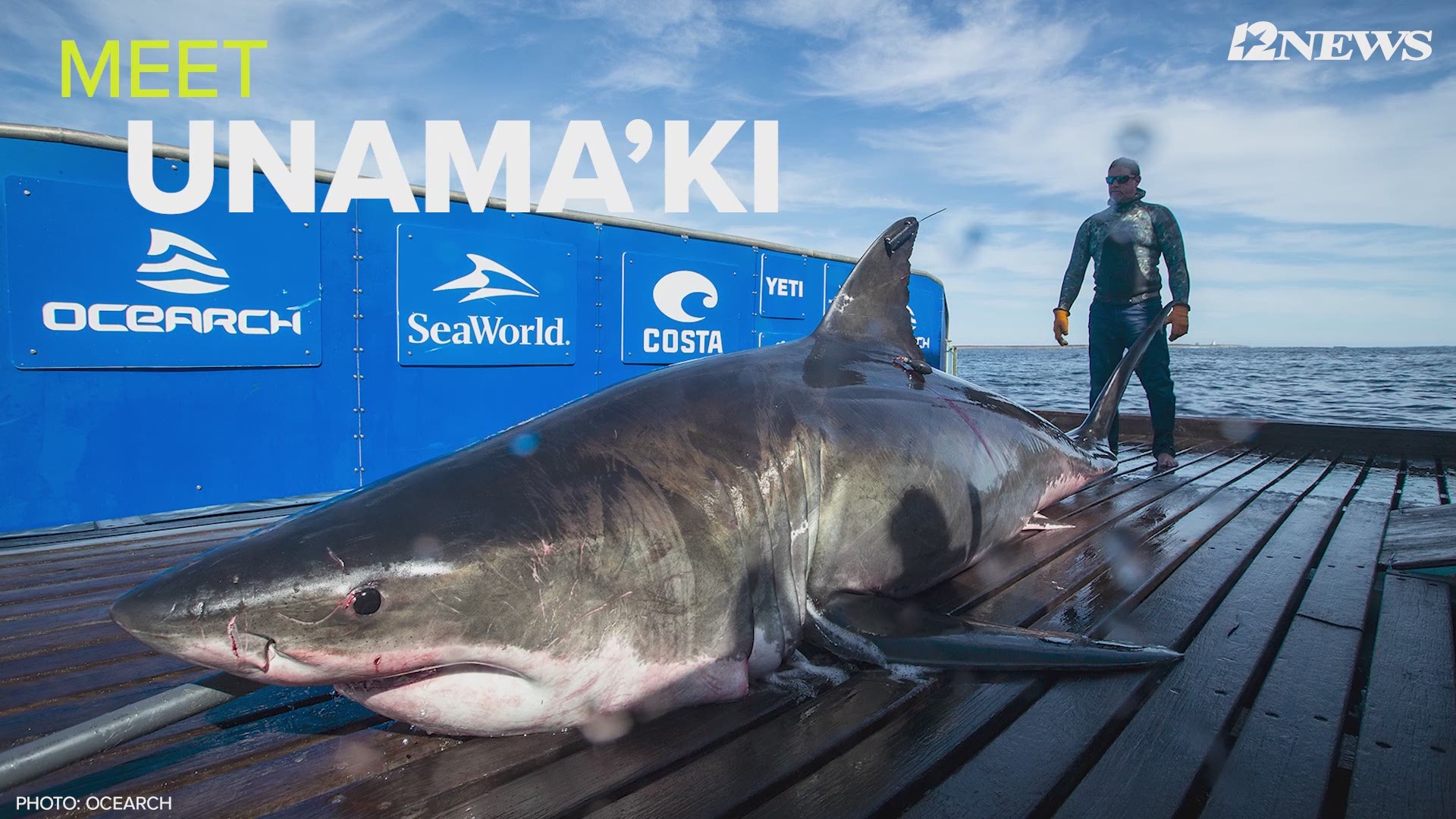BEAUMONT, Texas — There’s a great white shark that’s made it to our side of the Gulf of Mexico and you can track her movement.
First off, no need to worry. It's far offshore. The shark – named ‘Acadia’ – is tagged and gave off a signal Thursday, showing it was around 150 miles off the Galveston coast. It’s the second signal from that shark in the past month.
The first ping was on February 27.
“This morning, they heard from her again at about 8:32 a.m. and it was what’s called a Z-ping,” said underwater filmmaker and shark conservationist Paul Cater Dean. “That means the fin and the tracking device that was attached to it didn’t emerge from the water long enough to give a solid hit, and therefore the data was inconclusive, but what it does tell us is that she’s in all likelihood still out here in about the same location, although she may at this point be turning around to head back home because the waters are warming up again.”
Acadia is a 1,600-pound, 10.5-foot female sub-adult shark that was tagged off the coast of Nova Scotia on Sept. 29. The website OSeach tracks tagged shark movement and showed that she made the track to our area in less than five months.
This isn't the first time a Great White has been pinged in the Gulf of Mexico. Last February, the biggest shark with a GPS tag pinged off the Florida coast.
The video above is about Unama'ki who was pinged in the Gulf of Mexico last year
The 2,000-plus pound, 15 foot long female great white named Unama'ki was tracked 100 miles south of Panama City Beach on the Florida Panhandle. Unama'ki was later pinged just south of New Orleans on Fat Tuesday.
Great white sharks that normally call the East Coast and Canadian coastline home during the summer months travel southward into warmer water during the cooler months, sometimes making Florida their wintertime destination.
But don’t worry about Acadia moving close to the Texas coast. According to Dr. Larry McKinney with the Harte Research Institute at Texas A&M Corpus Christi, they’ll stay offshore.
“We’ll occasionally see white sharks that will venture into the Gulf. They don’t usually come in very far and they don’t come as far as the Texas coast, for example,” said McKinney. “But they get into the middle part of the Gulf and they’ll head back out.”

